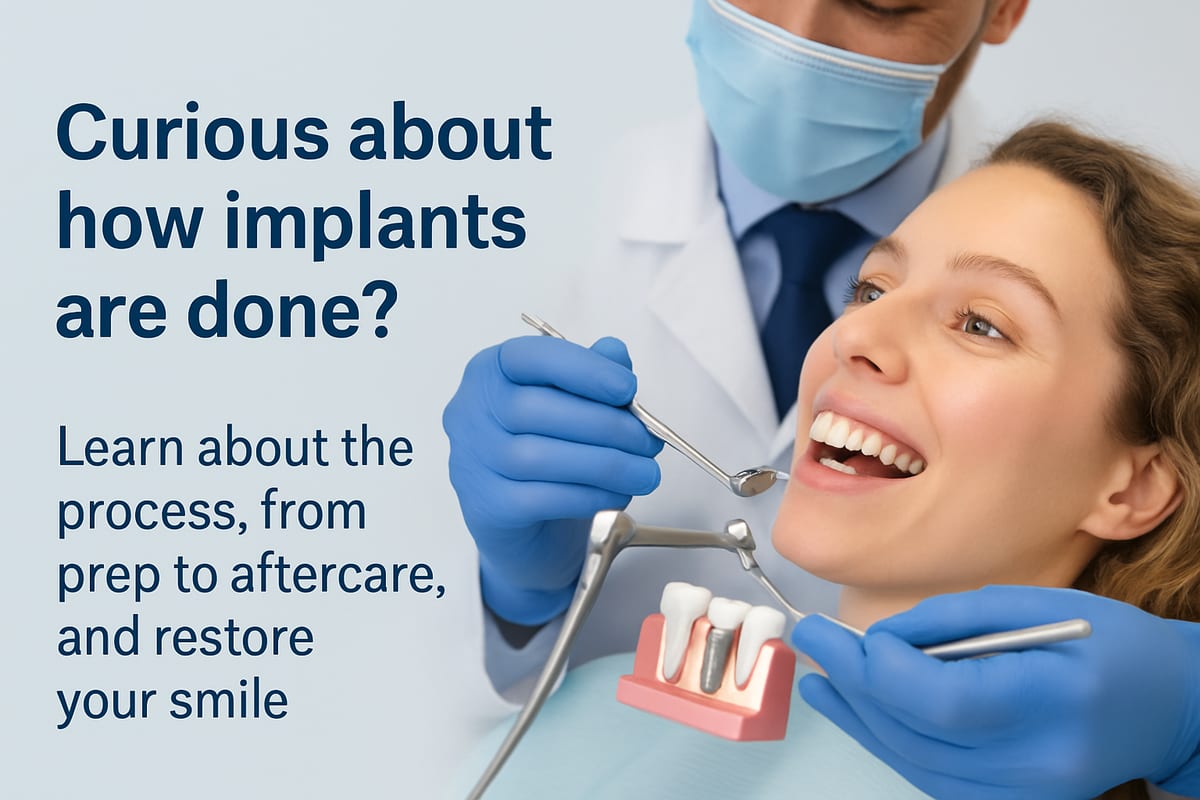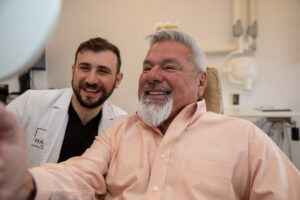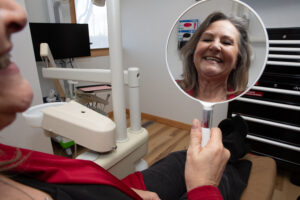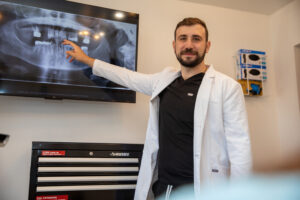This post answers the main question: how implants are done. You’ll get a clear, step-by-step overview of the process, typical timeline, and what to expect for healing and final teeth. Read on to learn practical next steps so you can feel ready for a consult or procedure.
In short, dental implants are placed in three main phases — evaluation and planning, the surgical placement, and healing with final restoration. Most cases take months from start to finish, but many patients leave with temporary teeth the same day of surgery.
Step 1 — Evaluation & Treatment Planning
Medical and dental history
Your team will review your health, current medications, smoking, and dental goals. This helps decide if implants are safe and whether pre-treatment (like quitting smoking or managing diabetes) is needed.
Imaging and digital planning
High-resolution imaging guides exact placement. Expect a CBCT scan to map bone and nerves and a Primescan intraoral scan to capture teeth and bite. These digital files let the clinician plan implant size and position precisely.
Creating a plan
The dentist will explain the surgical plan and the restorative plan (the final crown, bridge, or denture). You’ll get estimates for cost, timeline, and whether extractions or bone grafting are needed. A clear plan outlines visits, sedation options, and temporary teeth if applicable.
Step 2 — The Surgical Procedure: How Implants Are Done
Day-of steps
On surgery day you may receive IV sedation or local anesthesia. Typical steps include:
- Confirming the plan and anesthesia
- Making a small incision only if needed
- Using a controlled drilling sequence to prepare the bone
- Placing the implant fixture into the jaw
- Attaching a healing cap or placing a temporary crown/tooth
Most patients feel pressure but minimal pain during the procedure due to anesthesia.
Guided and minimally invasive options
Technology like X-Nav real-time guidance and 3D-printed surgical guides (made with Primeprint) lets clinicians place implants with high precision. Guided techniques often mean smaller incisions, less swelling, and faster recovery.
Immediate vs delayed loading
Some patients get a temporary crown the same day (immediate loading) when primary stability is strong. Others wait weeks to months for the implant to integrate before placing the final tooth (delayed loading). Your plan will state which approach fits your case.
Step 3 — Healing, Final Restoration, and Aftercare
Osseointegration and timeline
After placement the bone grows around the implant — osseointegration. This typically takes 3–6 months depending on location and bone quality. Early healing includes mild soreness and swelling. Follow-up visits monitor progress and watch for signs of infection, persistent pain, or loose fixtures.
Final restoration
Once healed, the final crown, bridge, or implant-supported denture is attached. Many practices use in-house Primeprint 3D printing and Primescan scans to create custom, well-fitting restorations faster and more accurately.
Aftercare and long-term maintenance
Aftercare includes short-term pain control, a soft diet for several days, and careful oral hygiene. Long-term, brush and floss around implants, keep routine dental visits, and avoid smoking. With good care, implants can last many years or a lifetime.
Types of Implants, Who’s a Candidate, and Choosing a Provider
Common implant types
- Single-tooth implants — replace one missing tooth
- Implant bridges — replace several teeth without an implant per tooth
- Implant-supported dentures — more stable than removable dentures
- Full-arch solutions (All-on-4) — replace an entire arch with a fixed prosthesis
Who is a good candidate
Good candidates have adequate bone and controlled medical conditions. If bone is low, a bone graft or sinus lift may be required before implants. Your evaluation and CBCT scan determine candidacy and any preparatory procedures.
Choosing the right provider (light practice note)
Look for advanced training, CBCT and digital scanning (Primescan), guided surgery tools like X-Nav, in-house 3D printing (Primeprint), and sedation options. Dr. Omar Harmouche, DMD, of HAR Dental Group is a Tufts-trained implant dentist experienced in full-mouth restorations and IV sedation, serving patients across Tulia, Plainview, and Slaton, TX.
Next steps / CTA
To prepare for a consult, bring your medical history, list of medications, and any prior dental x-rays. Ask about the proposed timeline, sedation options, costs, and whether same-day teeth are possible. If you want to learn more about how implants are done in Panhandle, TX, schedule a consultation with HAR Dental Group to review your case and get a personalized plan.






